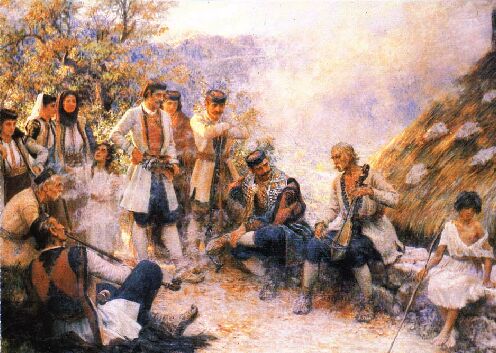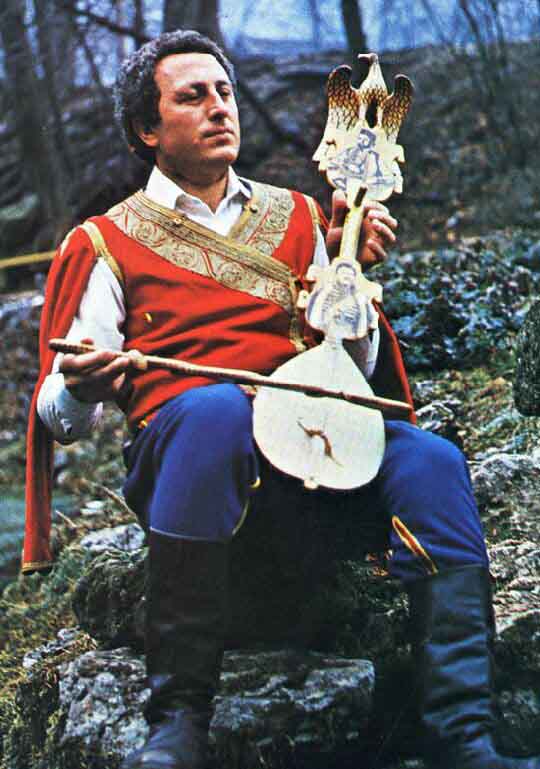
Gusle is an
very old instrument played all over the Serb lands. Its songs were basic
and often the only way to hand down traditions and memory of Serb people
during the rule of foreigners. People gathered around gusle players and
listened epic songs about Serb heroes and suffering of Serb nation. Very
often, large crowd and players began to cry touched by very emotional
contents. It is said that in the year of 1189 grand Serb chieftain Stefan
Nemanja saw German Emperor Frederick Barbarossa off from the city of Nis
to Third Crusade with the sounds of gusle songs. Montenegrin prince-bishop,
greatest Serb poet and father of modern Serb national identity Petar II
Petrovic Njegos, in his poem "The Mountain Wreath" through words
of his literature hero Vuk Micunovic said: "In a house where the gusle
is not heard, both the house and the people there are dead".
From the
Encyclopaedia Britannica
GUSLE - stringed
musical instrument of the Balkans, with a round wooden back, a skin belly,
and one horsehair string (or, rarely, two) secured at the top of the neck
by a rear tuning peg. It is played in a vertical position, with a deeply
curved bow. It has no fingerboard, the string being stopped by the sideways
pressure of the player's fingers. Gusle players or Guslari are among
the few performers continuing the oral tradition of epic poetry. Most of
their songs are about the era of Turkish rule and were handed down by teachers
or older singers. Because the narratives are orally transmitted, variation
in content is inevitable.

The
Gusle player from Montenegro dressed in traditional Montenegrin folk attire
The
colors of folk attire are red, blue and white which are the colors of Serb
nation. On the neck of the gusle two pictures can be seen, the picture
of Montenegrin bishop Petar II Petrovic Njegos (upper), the father of modern
Serb national identity, and the picture of Karadjordje, the leader of the
First Serbian Uprising in 1804. The pictures symbolize the eternal unity
of two Serb states, Montenegro and Serbia.
|

